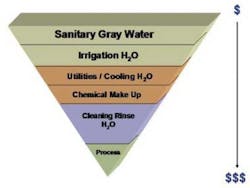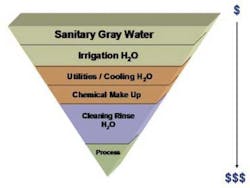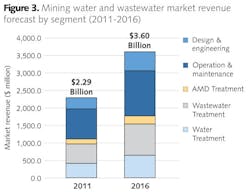A new model hopes to provide information on groundwater supply in Arizona. Can such technology be used to help other countries know more about how water tables and flow in connected aquifers are affected by groundwater withdrawals?
Better information on several aspects of groundwater flow have been urgently required in Arizona for some time. Many areas lack documentation of the response of the groundwater system to changes after withdrawals and recharge. Furthermore, data needed to define groundwater flow between vertically adjacent water-bearing units has been lacking in many areas.
March 2011 helped change this. The U.S. Geological Survey released a groundwater model of the interconnected aquifers in central and northern Arizona. A numerical flow model (MODFLOW) of the groundwater flow system in the primary aquifers in northern Arizona was developed to simulate interactions between the aquifers, perennial streams, and springs for predevelopment and transient conditions during 1910 through 2005.
The computer model, known as the "Northern Arizona Regional Groundwater-Flow Model," simulates how recharge from rainfall and snowmelt moves through the region's aquifers and eventually provides water to rivers, streams, and springs. Joint financed by the Arizona Department of Water Resources, the study area primarily covers northern and central Arizona and includes the watersheds of the Verde, Salt, Little Colorado, and Colorado Rivers. Groundwater is the predominant source of water for the study area's 550,000 residents in Apache, Coconino, Gila, Mohave, Navajo, and Yavapai Counties.
Although the model has not yet been used to estimate future conditions, it has been used to explore the effects of natural climate variations and groundwater pumping that occurred in northern Arizona between 1915 and 2005.
For example, the model was used to estimate changes in streamflow and spring discharge resulting from wetter - and dryer - than normal conditions during the 20th century. Declines in the water table and decreases in flow at Del Rio Springs near Prescott, Arizona, and Chevelon Creek near Winslow, Arizona, resulting from groundwater pumping also have been simulated.
Five objectives have been outlined for the study: develop a groundwater-flow model that represents the regional groundwater-flow system and changes in the system; evaluate the current concepts of groundwater flow in the region; identify deficiencies in data available to define the hydrogeologic system; provide boundary conditions for local-scale models and finally provide a tool that can be used to help assess changes in the groundwater system that may result from groundwater use strategies. The new model builds on three previous studies completed by USGS that focus on groundwater resources in northern and central Arizona undertaken as part of Arizona Department of Water Resources' Rural Watershed Initiative. In developing the model, scientists also identified areas where better data or a better understanding of the groundwater-flow system would improve the predictive capacity of the model.
It was developed by first "constructing a hydrogeologic framework and a conceptual groundwater-flow model". Three-dimensional information on the geological units, water levels, hydraulic properties of the primary aquifers and groundwater flow to streams and springs were used in the development of the model.
USGS hydrologist Don Pool, the model's primary developer, said: "Because the model is regional and able to consider interconnected aquifers, it allows us to better understand and assess how groundwater development in one area might affect flow to or from adjacent areas. It also includes sufficient detail to study changes in smaller areas within the region such as the Verde Valley or the Coconino Plateau."
The report concludes: "The most common assumption is that no flow of groundwater occurs across an artificial groundwater boundary. The no flow assumption forces all of the changes that result from groundwater withdrawals, such as diminished groundwater discharge, to occur within the simulated sub-basin. In reality, a part of the change happens in adjacent hydraulically connected basins. WWi
Author's note:To see a full copy of the report, please visit: http://pubs.usgs.gov/sir/2010/5180/sir2010-5180.pdf.
More Water & WasteWater International Current Issue Articles
More Water & WasteWater International Archives Issue Articles





